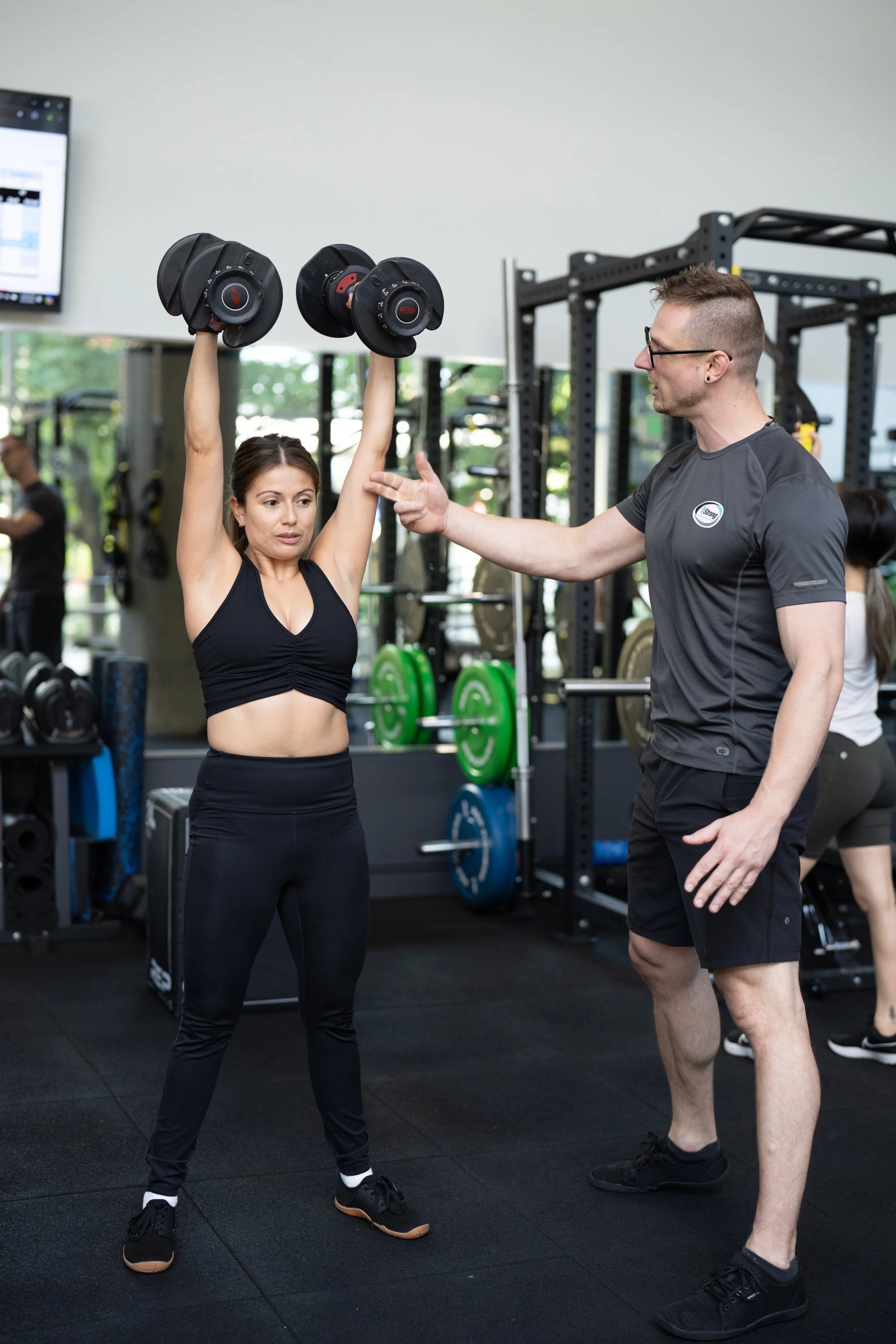All About Strength Training
What is it?
Strength training involves using the force of your muscles against resistance (also known as resistance training). Resistance can come from a variety of sources, including dumbbells, kettlebells, bands, hydraulics, pulleys, rocks, logs, kegs, or even your body weight.
The resistance breaks down your muscles. As the muscles repair themselves, they come back stronger and more resilient.
Why is it important?
Muscle mass helps us maintain a healthy metabolism. The more muscle mass our body has, the more calories we burn throughout the day.
While trying to lose fat, many people forget the importance of muscle. Someone may lose 20 pounds by doing lots of cardio and cutting calories. Unfortunately, a lot of that 20 pounds is probably muscle. Now, with less muscle, their metabolism drops, meaning it’s easier to pack on that weight after returning to normal habits. They get frustrated when they realize their next attempt at fat loss will be even more challenging. It’s a vicious cycle.
How do we avoid losing muscle when we lose weight?
Strength training.
It can help maintain what you already have, and it can also increase the amount of muscle mass your body holds, which increases your metabolism.
Other benefits
Improved bone density
Improved insulin sensitivity (decreasing risk of type 2 diabetes)
Lower risk of injury
Improved self-esteem
Enhanced speed, power, balance, and agility
Improved body composition
Decreased blood pressure
Decreased bad cholesterol levels
WHEN IT COMES TO EXERCISE, STRENGTH TRAINING IS YOUR MOST POWERFUL TOOL IN THE GYM.
Better than cardio?
Cardiovascular exercise has a long list of benefits. It can certainly be helpful in your journey to health and fat loss. However, focusing strictly on cardio can have drawbacks in the long run.
Most people say their goal is "weight loss" when, in fact, they mean "fat loss." While they may sound the same, there is an important difference.
Weight can come from anywhere - fat, muscle, water. Heck, you could cut off a limb and say you lost weight. But fat loss is a more specific goal.
You could maintain the same weight on the scale over three months. But in that time, you may have lost 5 pounds of fat and gained 5 pounds of muscle. You're going to look and feel a heck of a lot better with the fat loss even though you didn't lose any weight.
Strength training does a great job of attacking this body composition issue. You can firm up your muscles, look leaner, and feel stronger without spending hours and hours on a treadmill.
When it comes to body composition (fat loss, muscle gain), Strength Training should be the main course, and Cardio should be the side dish.
How do I incorporate it?
Using bodyweight, barbells, dumbbells, kettlebells, or resistance bands, you can effectively train your body against resistance.
There are numerous ways to approach strength training. For maximum efficiency, incorporating compound (full-body) movements in a circuit format is highly effective.
It’s crucial not to rush through exercises or add high-intensity cardio to the point where you compromise good form and the ability to do challenging weights.
Strength training in a circuit format involves rotating through various exercises, targeting different muscle groups. This method allows for a comprehensive full-body workout in a shorter time. While rest periods between exercises are important, there’s no need for extended breaks of five minutes between sets.
Strength training at least twice a week provides a solid foundation for progress. Ensure you allow your body adequate recovery time between workouts through sleep, stretching, massage, and other recovery methods.

